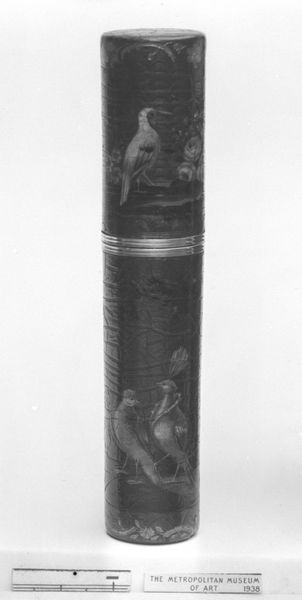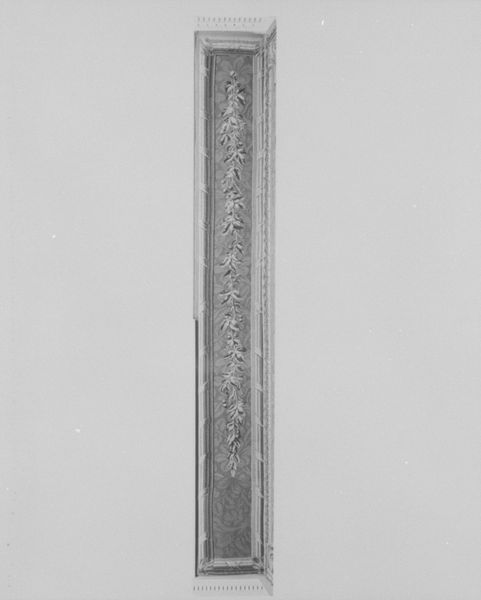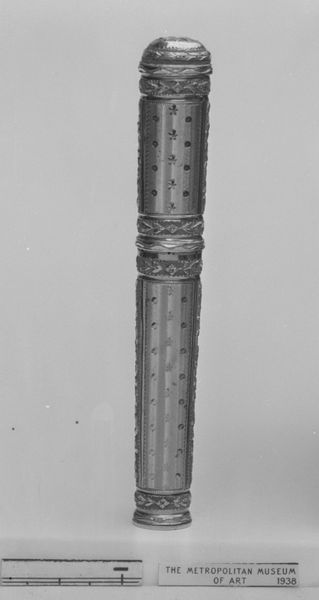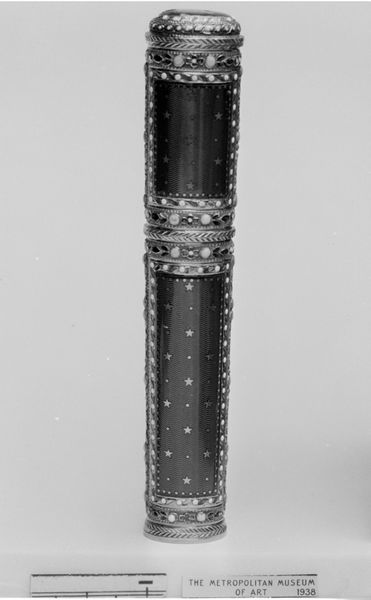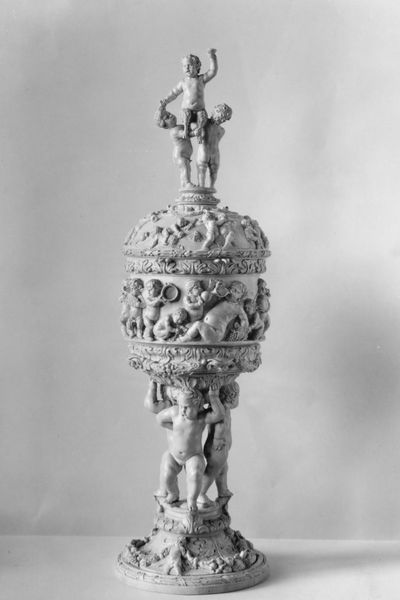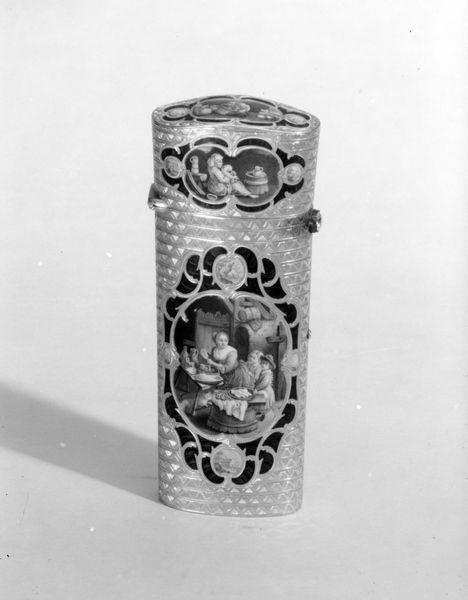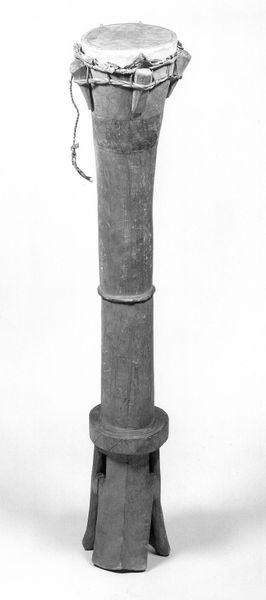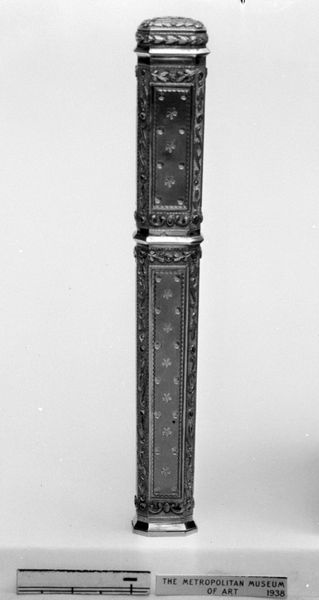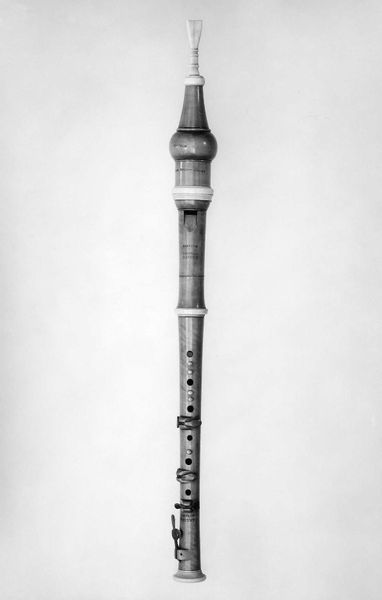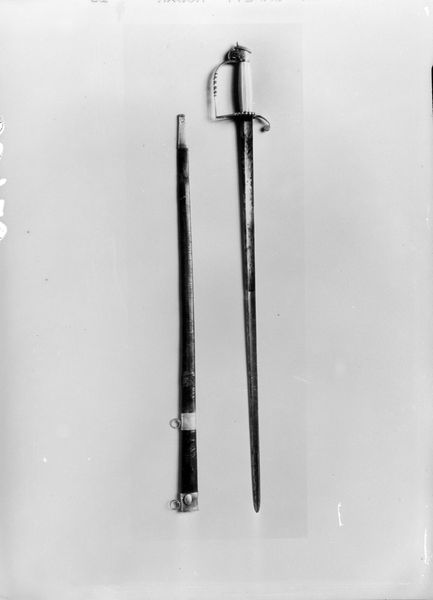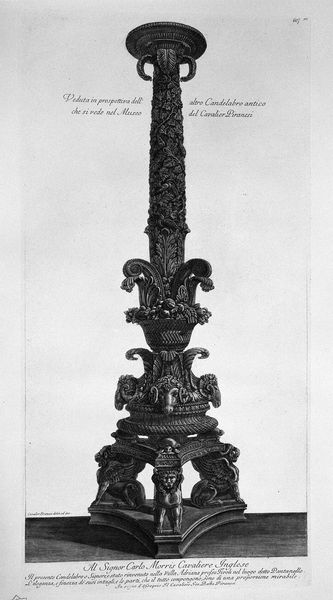
Dimensions: Height: 4 7/16 in. (11.3 cm)
Copyright: Public Domain
Editor: Here we have what's described as an 'Étui,' a decorative metal case, dating from 1768 to 1774. It's ornate! It almost feels like a miniature building, with all these details worked into the surface. What can you tell me about how we interpret its design? Art Historian: The 'Étui' embodies the Rococo spirit. These objects served as symbols of status, laden with meaning, and are highly tactile. Notice the sculptural detail; they're not mere decoration. They communicate on several layers. Editor: Layers, like what? Art Historian: Observe how the various images evoke pastoral scenes and classical allusions. These aren't random—they are chosen to resonate with the values of its owner. The countryside scene is particularly telling. It hearkens back to a sense of cultivated, controlled nature—an idealized landscape. Does that contrast with anything else you observe about the object itself? Editor: Yes, you know it does. It is made of hard metal and so intricately worked. I’m trying to reconcile the refined nature of it. Art Historian: It reveals a fascinating paradox at play within the cultural memory. Aristocratic societies sought an escape to a natural simplicity they simultaneously dominated and idealized, reflecting perhaps their yearning for an authenticity that remained perpetually out of reach. Editor: So, it’s like the owner wanted to remember or perhaps be reminded to remember these simpler things, despite indulging in extravagant things? Thank you! Art Historian: Precisely. It highlights how objects can embody complex layers of cultural yearning and status, far beyond their basic function.
Comments
No comments
Be the first to comment and join the conversation on the ultimate creative platform.
